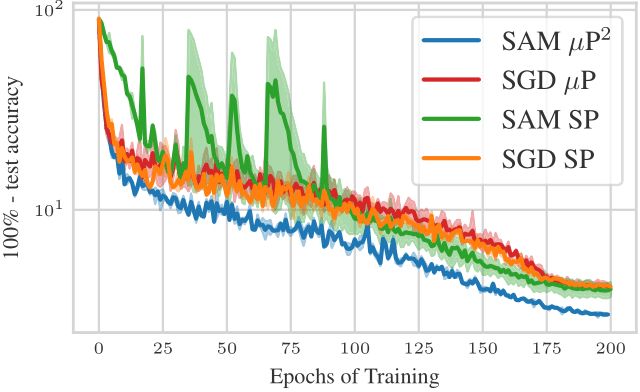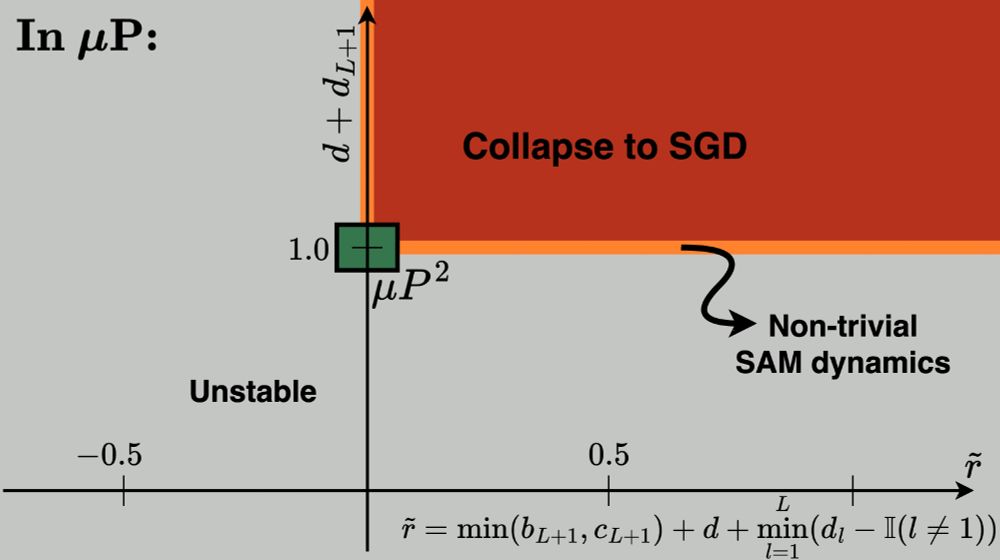mohawastaken.github.io
🧵 10/10
🧵 10/10
How achieve correct scaling with arbitrary gradient-based perturbation rules? 🤔
✨In 𝝁P, scale perturbations like updates in every layer.✨
💡Gradients and incoming activations generally scale LLN-like, as they are correlated.
➡️ Perturbations and updates have similar scaling properties.
🧵 9/10
How achieve correct scaling with arbitrary gradient-based perturbation rules? 🤔
✨In 𝝁P, scale perturbations like updates in every layer.✨
💡Gradients and incoming activations generally scale LLN-like, as they are correlated.
➡️ Perturbations and updates have similar scaling properties.
🧵 9/10
In experiments across MLPs and ResNets on CIFAR10 and ViTs on ImageNet1K, we show that 𝝁P² indeed jointly transfers optimal learning rate and perturbation radius across model scales and can improve training stability and generalization.
🧵 8/10


In experiments across MLPs and ResNets on CIFAR10 and ViTs on ImageNet1K, we show that 𝝁P² indeed jointly transfers optimal learning rate and perturbation radius across model scales and can improve training stability and generalization.
🧵 8/10
(1) stability,
(2) feature learning in all layers,
(3) effective perturbations in all layers.
We call it the ✨Maximal Update and Perturbation Parameterization (𝝁P²)✨.
🧵 7/10


(1) stability,
(2) feature learning in all layers,
(3) effective perturbations in all layers.
We call it the ✨Maximal Update and Perturbation Parameterization (𝝁P²)✨.
🧵 7/10
For us, an ideal parametrization should fulfill: updates and perturbations of all weights should have a non-vanishing and non-exploding effect on the output function. 💡
We show that ...
🧵 6/10
For us, an ideal parametrization should fulfill: updates and perturbations of all weights should have a non-vanishing and non-exploding effect on the output function. 💡
We show that ...
🧵 6/10
... we show that 𝝁P is not able to consistently improve generalization or to transfer SAM's perturbation radius, because it effectively only perturbs the last layer. ❌
💡So we need to allow layerwise perturbation scaling!
🧵 5/10

... we show that 𝝁P is not able to consistently improve generalization or to transfer SAM's perturbation radius, because it effectively only perturbs the last layer. ❌
💡So we need to allow layerwise perturbation scaling!
🧵 5/10
🧵 4/10

🧵 4/10
🧵 3/10
🧵 3/10
arxiv.org/pdf/2411.00075
A thread on our Mamba scaling will be coming soon by
🔜 @leenacvankadara.bsky.social
🧵2/10
arxiv.org/pdf/2411.00075
A thread on our Mamba scaling will be coming soon by
🔜 @leenacvankadara.bsky.social
🧵2/10

